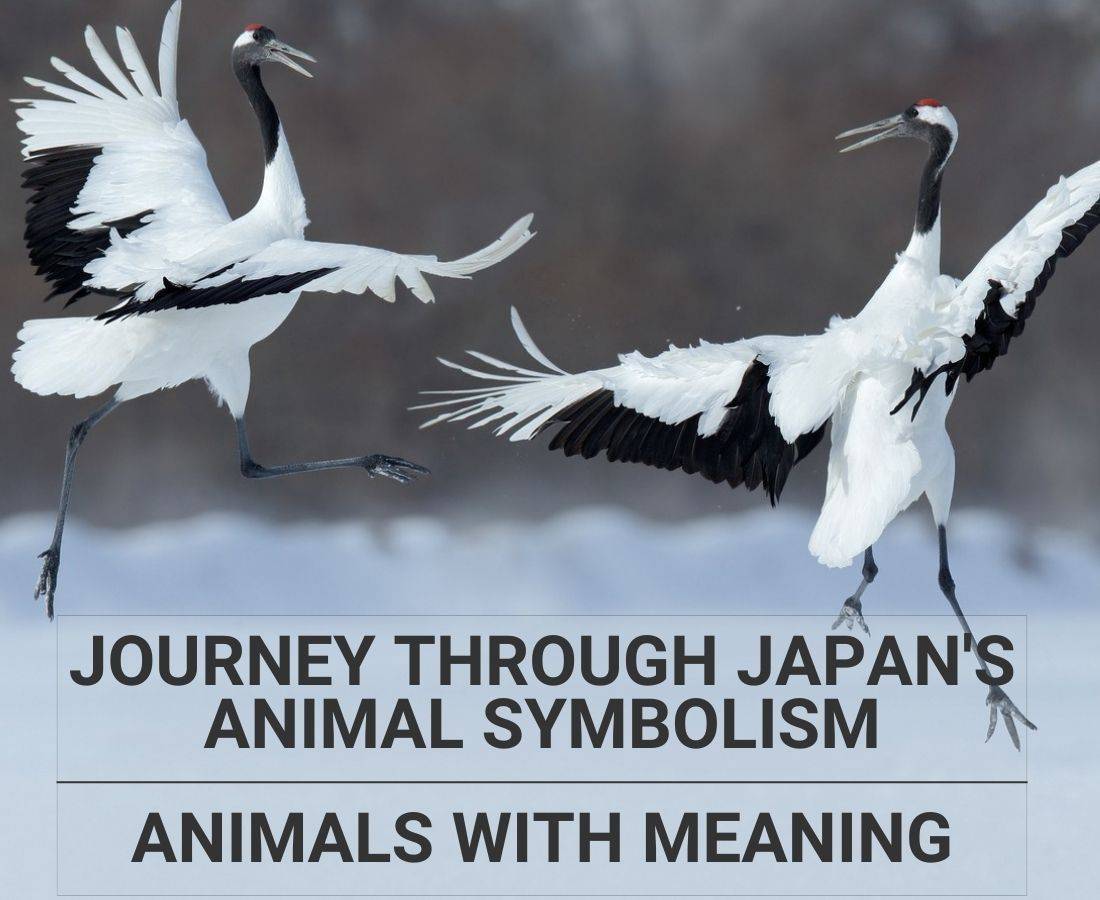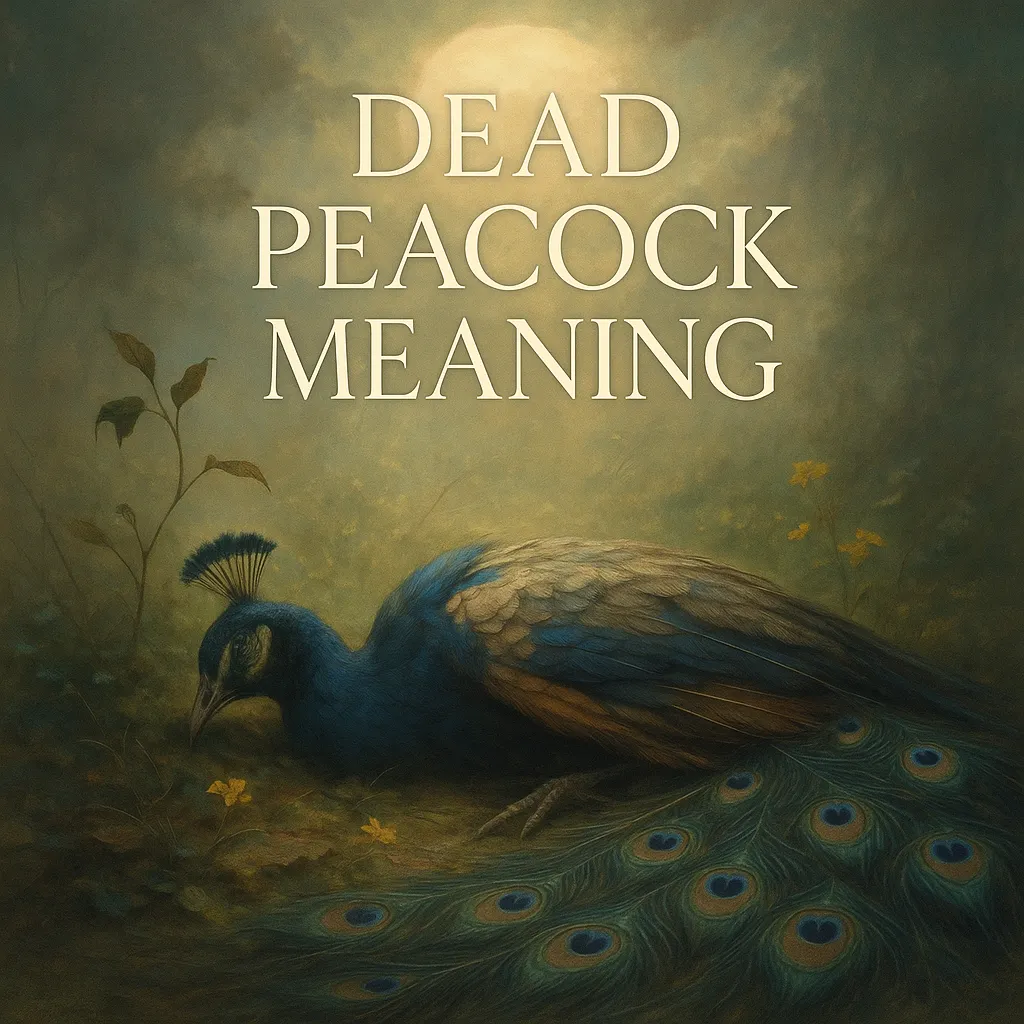Have you ever stood still, breath caught in your throat, as a fox’s amber eyes met yours through the morning mist of a Japanese shrine? For me, that fleeting moment at Fushimi Inari sparked a journey into the rich world of symbolic animals in Japan that forever changed how I view these spiritual messengers. The symbolic animals of Japan aren’t merely decorative motifs or characters in ancient tales—they’re living embodiments of values, warnings, and wisdom that have guided Japanese spiritual life for centuries.
As I watched that kitsune (fox) disappear between the vermilion torii gates, I couldn’t help but wonder: what message was this trickster spirit delivering? In Japanese culture, animals transcend their physical forms to become bridges between our world and the divine. Whether it’s the persevering koi swimming upstream, the loyal Akita dog, or the transformative dragon dancing through temple ceilings, these symbolic animals in Japan offer us profound insights into both the culture and our own spiritual journeys.
Join me as we explore these sacred messengers and discover what wisdom they might be offering you…
Table of Contents
- 1 Key Takeaways
- 2 The Fox and the Dragon: Powerful Symbolic Animals in Japan
- 3 Ryu: The Elemental Dragon
- 4 Tsuru: The Sacred Crane
- 5 Koi: The Persevering Fish
- 6 Tanuki: The Playful Raccoon Dog
- 7 Shika: Sacred Deer in Japanese Animal Symbolism
- 8 Hebi: The Transformative Snake in Japanese Symbolism
- 9 Kame: The Wise Tortoise in Japanese Animal Mythology
- 10 Komainu: Guardian Lion-Dogs of Sacred Spaces
Key Takeaways
- Japanese fox spirits (kitsune) serve as divine messengers of Inari and symbolize both wisdom and trickery, gaining additional tails and powers as they age.
- Unlike Western dragons, Japanese dragons (ryu) represent wisdom and good fortune, controlling water elements and embodying the balance between opposing forces.
- The crane symbolizes longevity and peace in Japan, inspiring the tradition of folding one thousand paper cranes (senbazuru) as prayers for healing.
- Koi fish embody perseverance and transformation, with different colors carrying specific meanings—gold for wealth, black for overcoming difficulties.
- Sacred animals like deer (shika) and guardian lion-dogs (komainu) serve as living bridges between humans and the divine, protecting the boundaries between worlds.
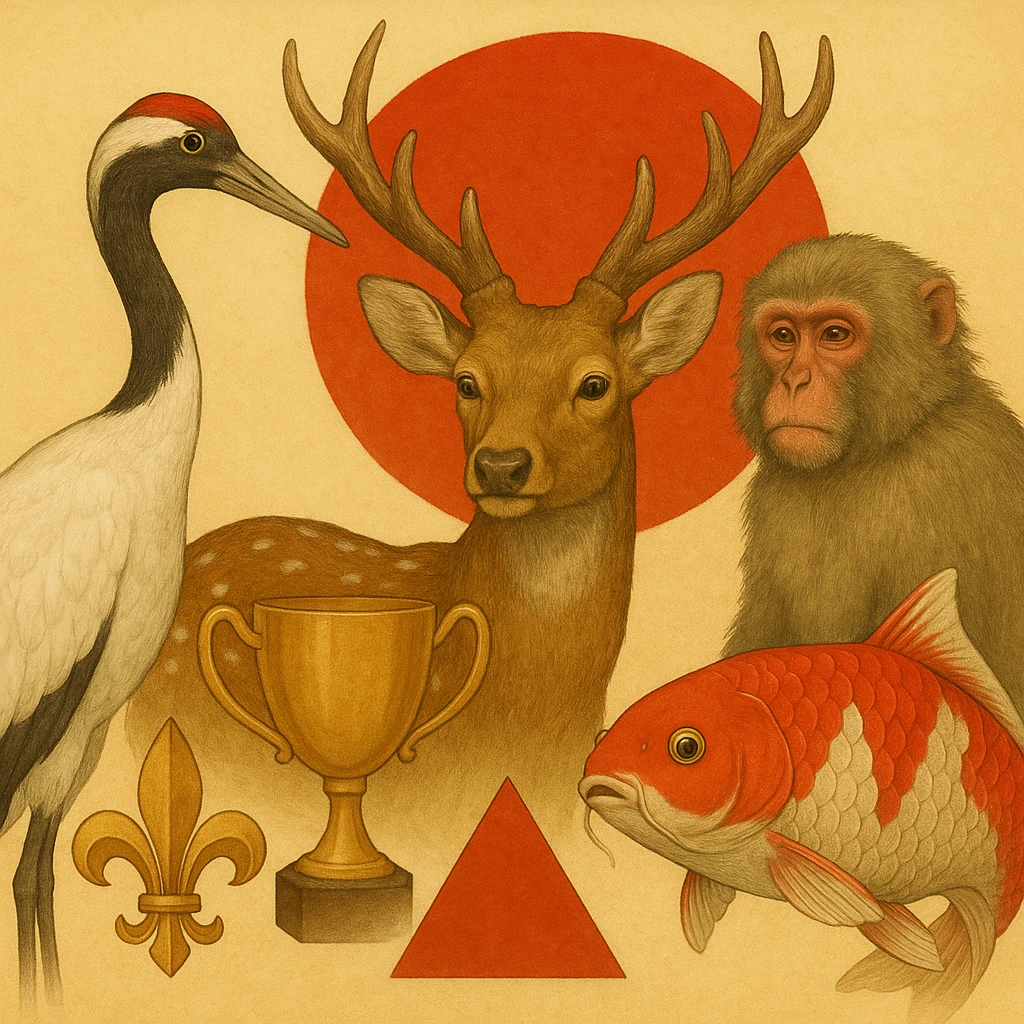
The Fox and the Dragon: Powerful Symbolic Animals in Japan
Kitsune: The Mystical Fox Spirits of Japan
The kitsune holds a special place among symbolic animals in Japanese mythology. While standing amid the countless red torii gates at Fushimi Inari Taisha in Kyoto, I couldn’t help but feel the watchful presence of these legendary fox messengers.
In Shinto belief, foxes serve as the divine messengers of Inari, the kami (deity) of rice, prosperity, and success. White foxes, in particular, are considered sacred and pure—their statues guarding shrine entrances throughout Japan, often depicted with a key or scroll in their mouth.
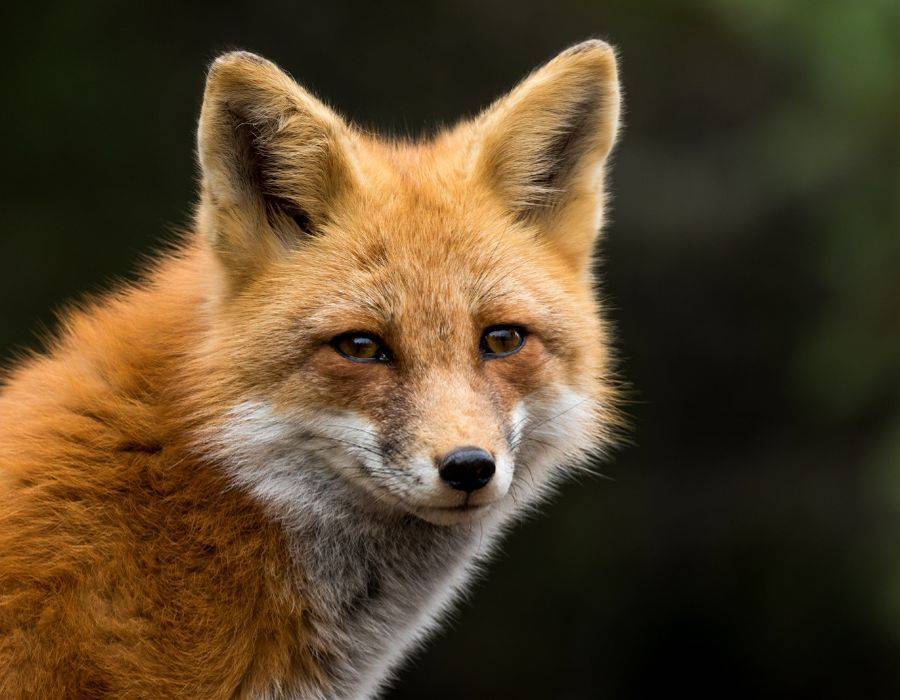
What fascinates me most about the kitsune is their duality. These intelligent creatures embody both benevolence and mischief, wisdom and trickery. According to folklore, foxes gain additional tails as they age, with nine-tailed foxes possessing immense wisdom and magical powers, including shapeshifting into human form.
The kitsune’s spiritual significance runs deep. As fox symbolism reveals, these creatures represent intelligence, adaptability, and cunning. They remind us to use our wit and resourcefulness when facing life’s challenges.
Ryu: The Elemental Dragon
Unlike the fearsome Western dragons, Japanese dragons (ryu) embody wisdom, good fortune, and protection. These serpentine creatures control water and weather, bringing life-giving rain to crops and protecting communities from floods.
During my visit to Senjū-ji Temple in Aomori, I was mesmerized by the magnificent dragon painting on its ceiling. The master monk explained that in Japanese animal meanings, dragons represent balance and the marriage of opposing forces—heaven and earth, water and fire, destruction and creation.
Dragons in Japan differ from their Chinese counterparts in subtle ways, often appearing with three claws instead of five and possessing a more serpentine body. These differences evolved as dragons made their way from China to Japan, adapting to the unique spiritual landscape of the archipelago.
Tsuru: The Sacred Crane
Perhaps no bird captures the Japanese imagination quite like the graceful crane. These elegant creatures symbolize longevity, good fortune, and fidelity. In ancient times, the Japanese believed cranes could live for a thousand years, making them powerful symbols of endurance and hope.
The tradition of folding one thousand paper cranes (senbazuru) originated from this symbolism. I’ll never forget watching an elderly woman in Hiroshima Peace Memorial Park meticulously adding her crane to a colorful string of thousands—each fold a prayer for peace and healing.
Crane symbolism extends beyond longevity to represent grace during life transitions. When I was going through a difficult career change, a friend gifted me a small ceramic crane, reminding me to navigate change with dignity and patience.
Koi: The Persevering Fish
The story of the koi fish swimming upstream against the Yellow River current to become a dragon remains one of Japan’s most inspiring legends. These colorful carp embody perseverance, determination, and the reward that comes from never giving up.
During my stay at a traditional ryokan in Takayama, I spent hours watching koi fish swimming in the garden pond. Their deliberate, powerful movements against the current reminded me of the Japanese proverb: “Fall seven times, stand up eight.”
Koi symbolism in Japan often appears in art, tattoos, and garden ponds as a reminder that obstacles are opportunities for transformation. Different colors carry varied meanings—the golden koi represents wealth, the black koi symbolizes overcoming difficulties, while the blue koi embodies masculinity and reproduction.
Tanuki: The Playful Raccoon Dog
No exploration of symbolic animals in Japan would be complete without mentioning the mischievous tanuki. These raccoon dogs feature prominently in Japanese mythology, often depicted with comically large testicles, a straw hat, and a bottle of sake (see also the post about the spiritual meaning of a dead raccoon).
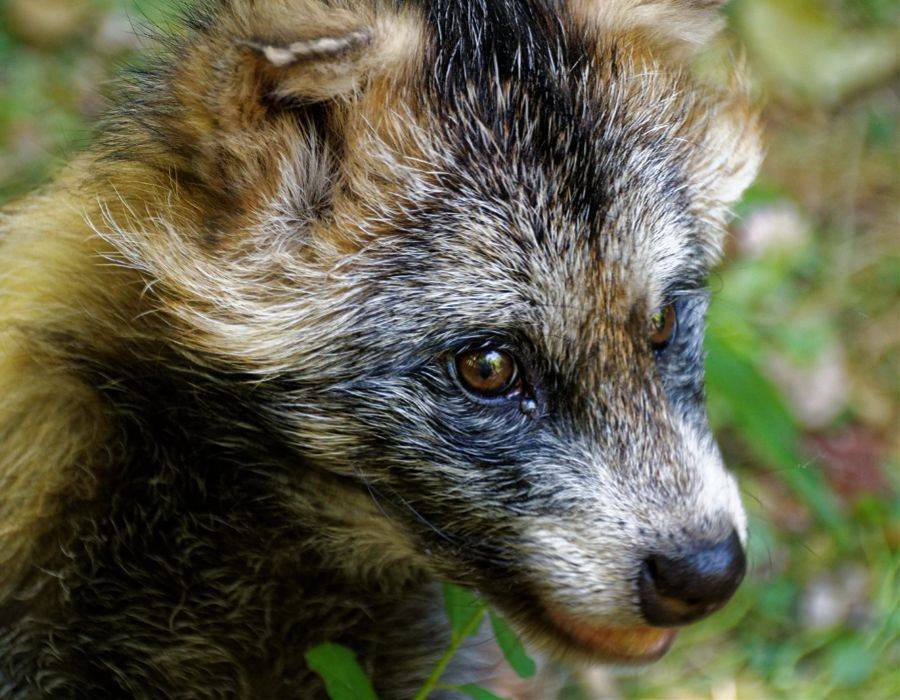
Unlike the clever, sometimes dangerous kitsune, tanuki are jovial tricksters associated with prosperity and good fortune. Their statues stand outside restaurants and shops throughout Japan, inviting customers and good luck inside.
Shika: Sacred Deer in Japanese Animal Symbolism
Walking through Nara Park on a misty morning, I found myself surrounded by dozens of gentle deer bowing for treats. These aren’t ordinary animals—they’re considered divine messengers in Japanese culture, particularly sacred to the Kasuga Shrine. The experience felt like stepping into another world where the boundary between the spiritual and physical realms blurred before my eyes.
In Japanese mythology, deer (shika) represent gentleness, purity, and longevity. The deer’s close association with Shinto deities makes them particularly revered—to harm one was once considered a serious offense punishable by death. Their presence at sacred sites serves as a living bridge between humans and the divine.
When a deer approaches you in Japan, particularly near a shrine, many believe it’s not mere coincidence but a sign of spiritual blessing. I noticed how local visitors would bow respectfully to the deer before offering crackers, acknowledging their sacred status in the cultural animal symbolism of Japan.
Hebi: The Transformative Snake in Japanese Symbolism
Unlike Western traditions where snakes often represent evil, the snake (hebi) in Japanese culture embodies renewal, healing, and good fortune. During my visit to the Benzaiten shrine on Enoshima Island, I was struck by the beautiful snake motifs adorning the sacred space.
The Japanese white snake, in particular, is considered auspicious—a harbinger of wealth and prosperity. According to ancient Japanese animal meanings, snakes are connected to water deities and agricultural abundance. Farmers once welcomed these creatures into their storehouses as protectors of the harvest and bringers of good fortune.
In Japanese folklore, snakes often appear as shape-shifters, able to transform into beautiful women. These stories typically explore themes of forbidden love, gratitude, and sacrifice. The transformative nature of snakes—shedding their skin to be renewed—mirrors the Buddhist concept of rebirth and spiritual evolution.
Kame: The Wise Tortoise in Japanese Animal Mythology
The tortoise (kame) holds a special place among symbolic animals in Japan. According to the famous tale “Urashima Tarō,” a fisherman who saved a turtle was rewarded with a visit to the Dragon Palace beneath the sea. When he returned to his village, he discovered that what felt like days underwater had been centuries on land.
This legend highlights the tortoise’s association with longevity, wisdom, and the fluid nature of time. The Japanese believe that tortoises can live for ten thousand years, making them powerful symbols of endurance and patience. As crane symbolism represents the sky and heavenly realms, the tortoise represents the earth and its steady, grounding energy.
At the Kōtoku-in Temple in Kamakura, I noticed small turtle statues placed around the Great Buddha. The monk explained that these represented protection and stability—qualities the Japanese have valued for centuries, especially in times of change and uncertainty.
Komainu: Guardian Lion-Dogs of Sacred Spaces
Though not found in nature, the komainu (lion-dogs) deserve mention as some of Japan’s most prevalent mythological creatures. Standing guard at shrine entrances throughout the country, these fierce protectors ward off evil spirits and negative energies.
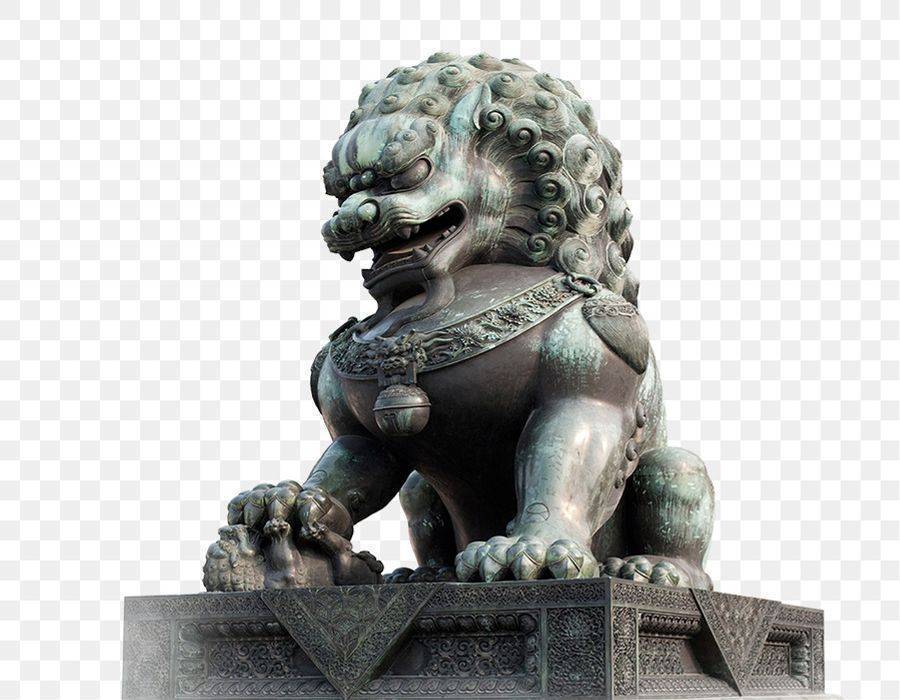
Typically appearing as a pair, one with mouth open (pronouncing “a,” the first letter of the Sanskrit alphabet) and one with mouth closed (pronouncing “um,” the last letter), together they form “aum”—the sacred sound of the universe. According to the Smithsonian’s Freer Gallery of Art, this duality represents the beginning and end of all things, a concept deeply embedded in Japanese spiritual thought.
During a rainstorm at Nikko’s Toshogu Shrine, I took shelter beneath the massive shrine gate and found myself face-to-face with these intricately carved guardians. Their powerful presence reminded me that in Japanese belief, the boundary between our world and the spiritual realm requires constant protection and respect.
The komainu’s fierce loyalty makes them popular motifs in Japanese tattoo art, representing protection for the wearer. Their symbolic power extends beyond religious spaces into Japan’s cultural identity, appearing in everything from traditional architectural ornaments to modern mascot designs.
